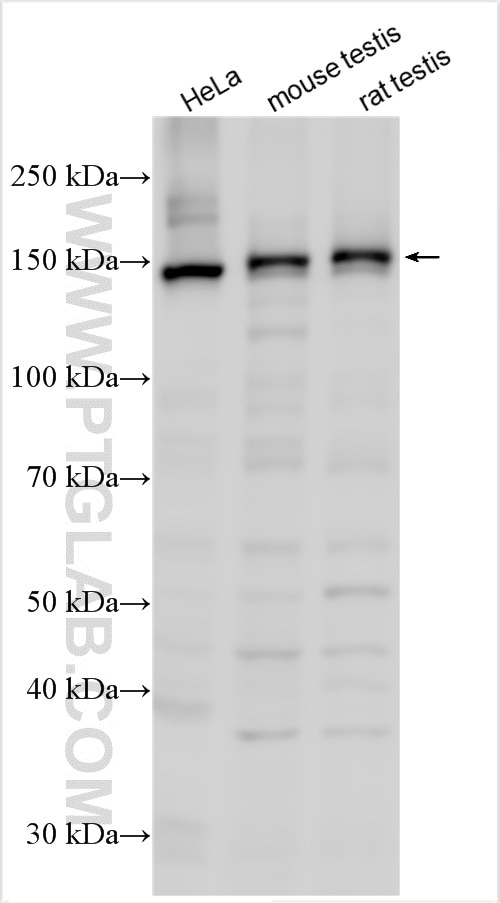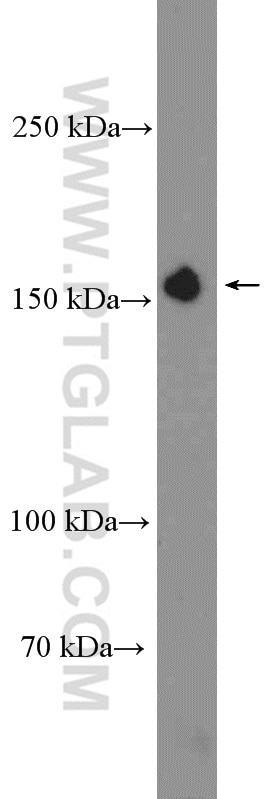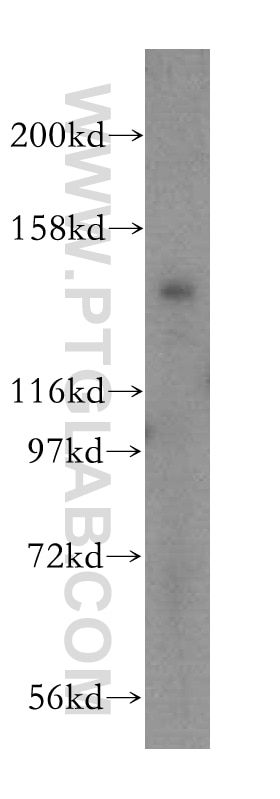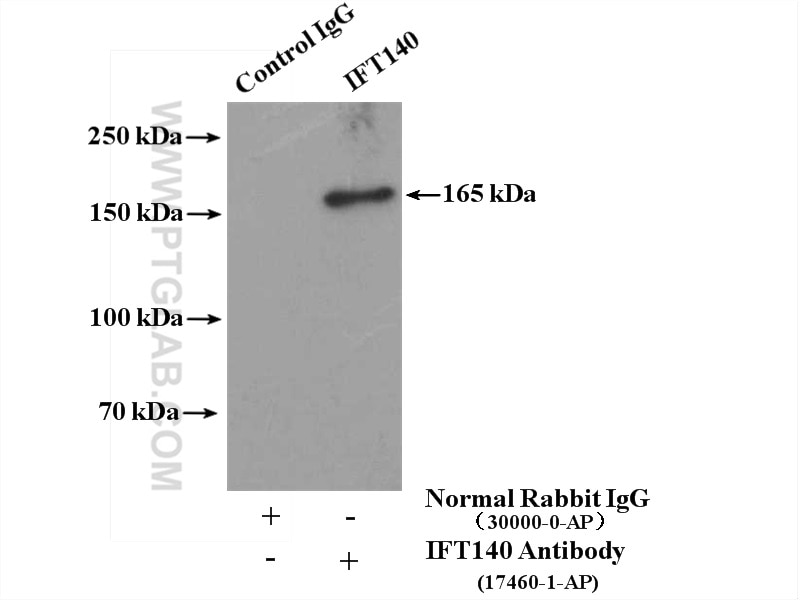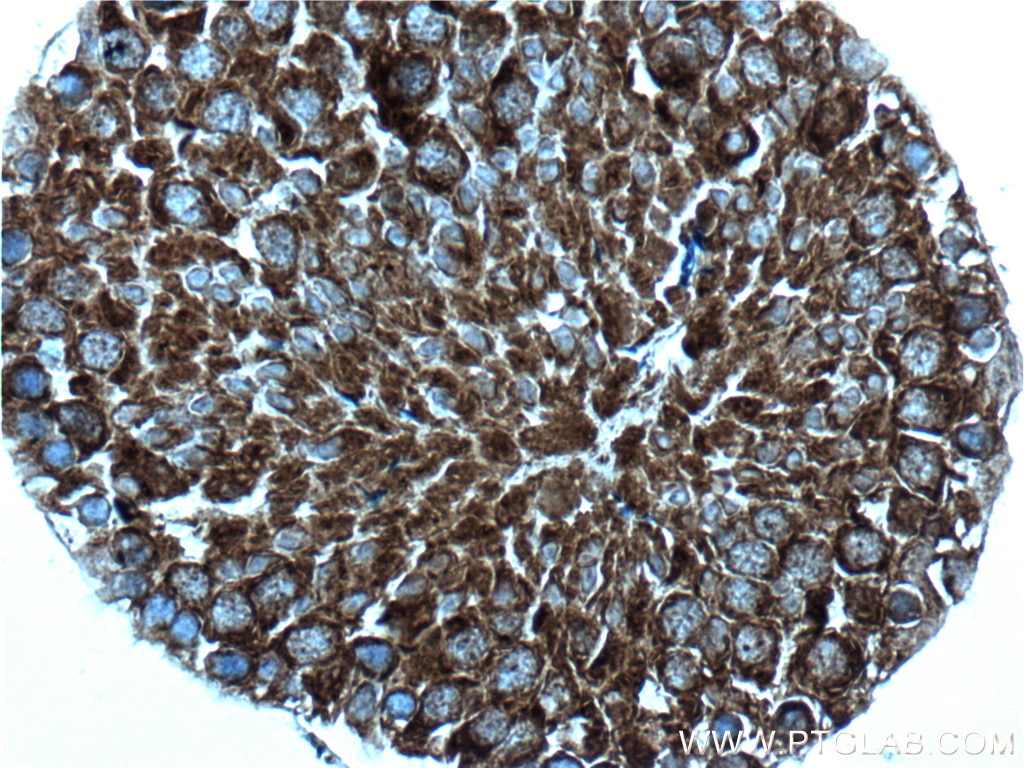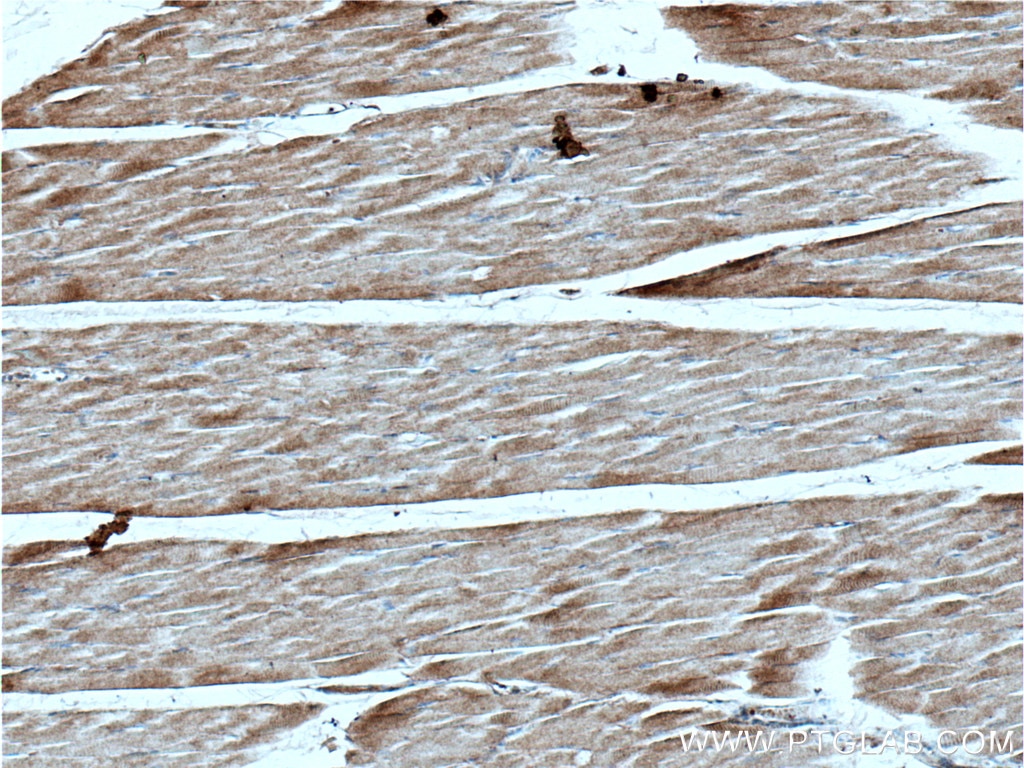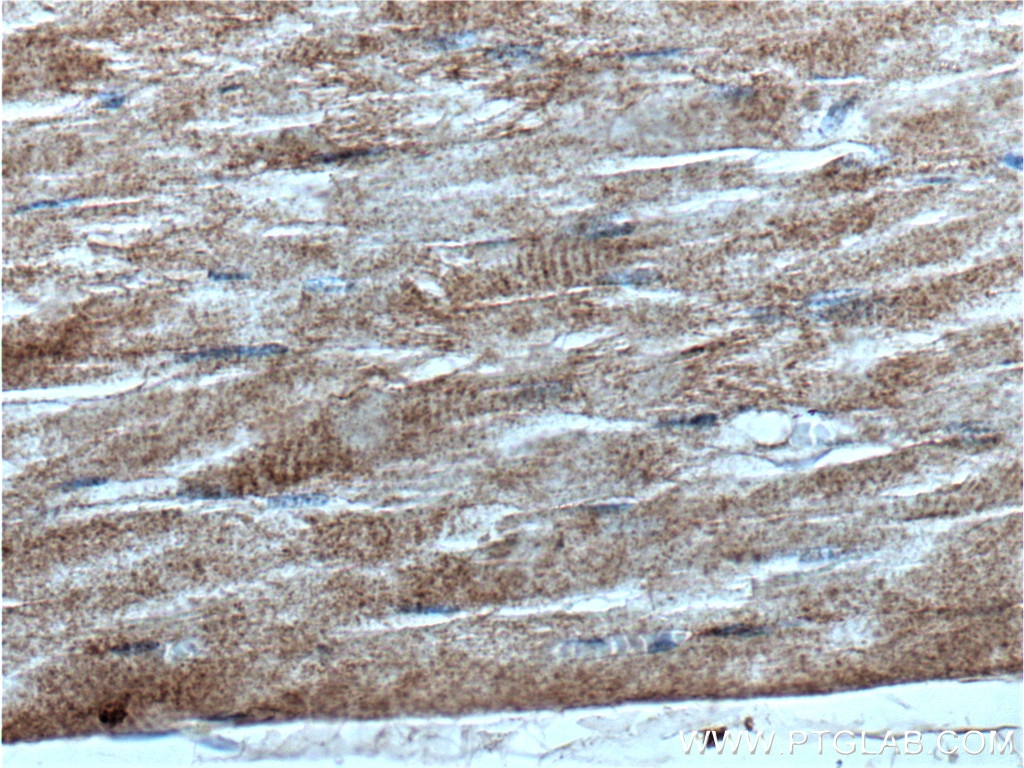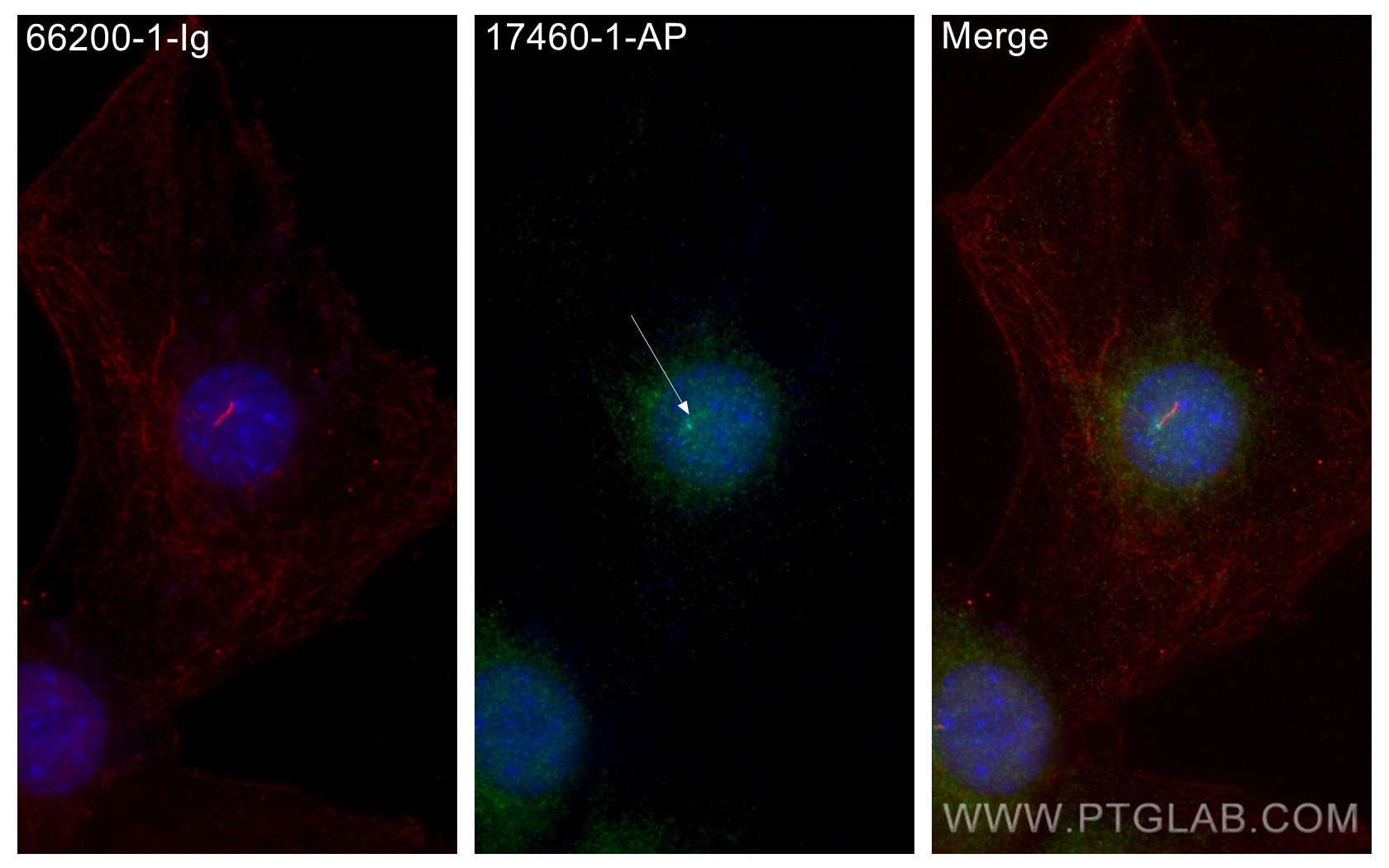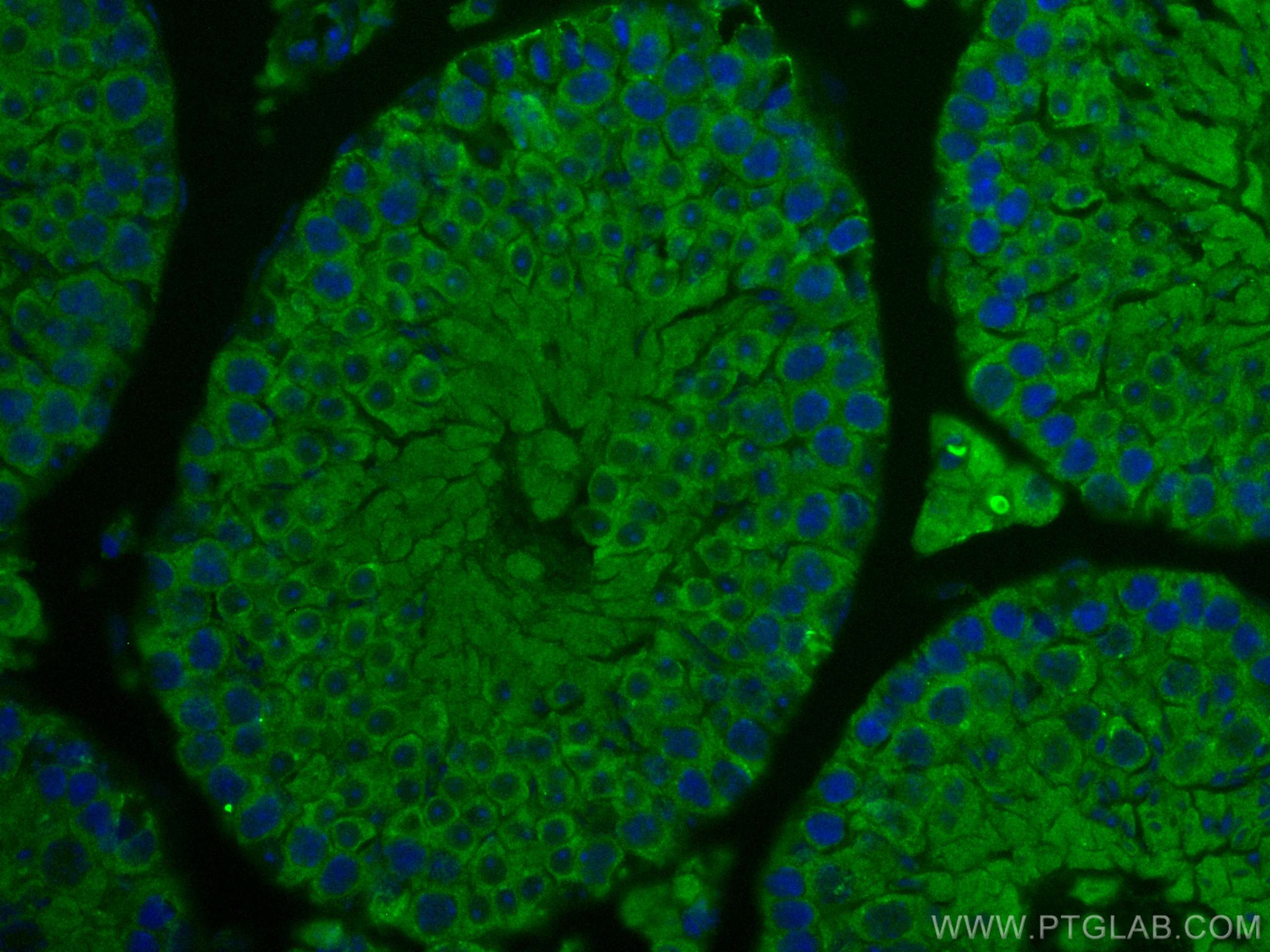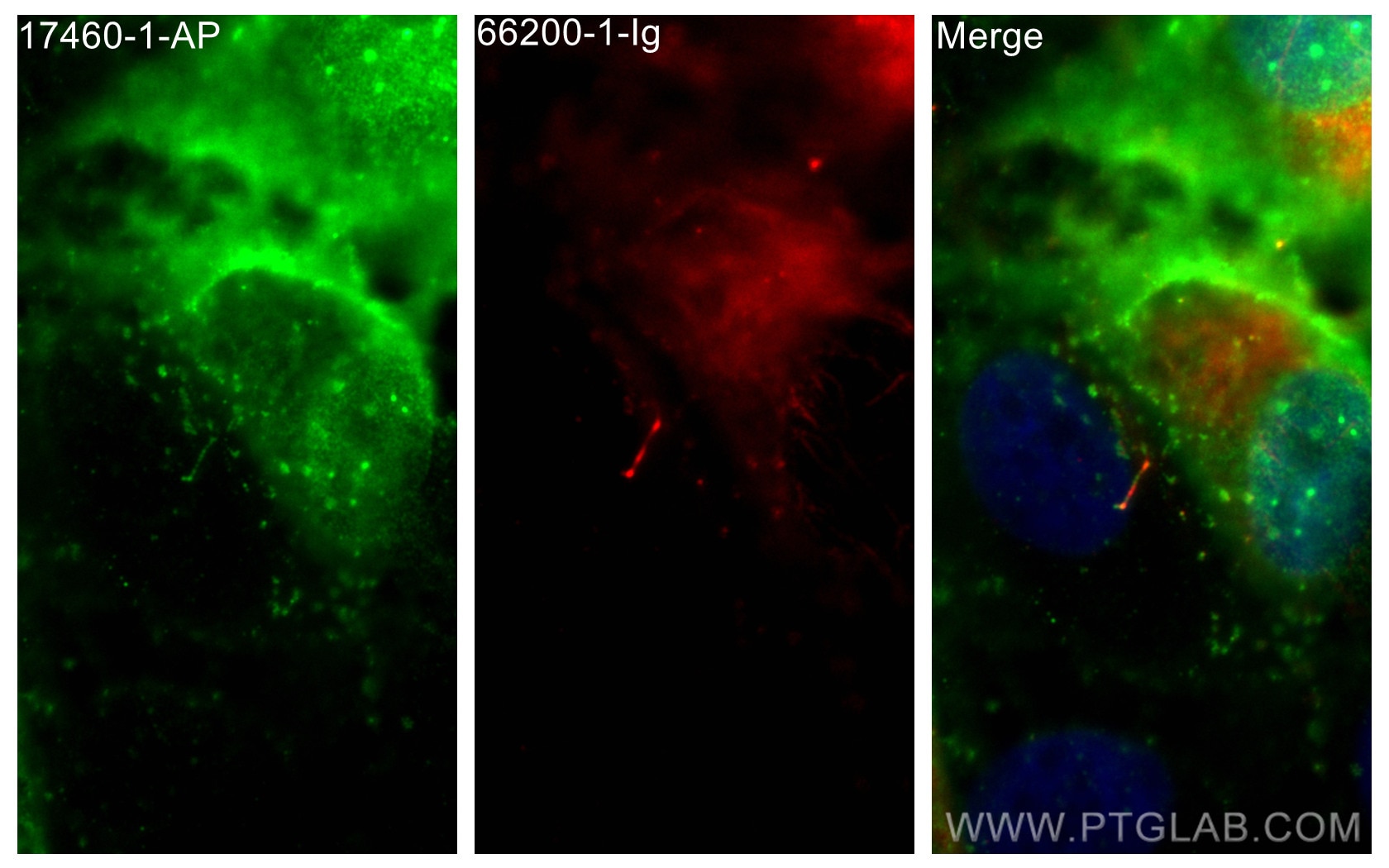- Featured Product
- KD/KO Validated
IFT140 Polyklonaler Antikörper
IFT140 Polyklonal Antikörper für IF, IHC, IP, WB, ELISA
Wirt / Isotyp
Kaninchen / IgG
Getestete Reaktivität
human, Maus, Ratte und mehr (2)
Anwendung
WB, IP, IHC, IF, CoIP, ELISA
Konjugation
Unkonjugiert
Kat-Nr. : 17460-1-AP
Synonyme
Galerie der Validierungsdaten
Geprüfte Anwendungen
| Erfolgreiche Detektion in WB | HeLa-Zellen, HepG2-Zellen, Maushodengewebe, Rattenhodengewebe |
| Erfolgreiche IP | Rattenhodengewebe |
| Erfolgreiche Detektion in IHC | Maushodengewebe, humanes Skelettmuskelgewebe Hinweis: Antigendemaskierung mit TE-Puffer pH 9,0 empfohlen. (*) Wahlweise kann die Antigendemaskierung auch mit Citratpuffer pH 6,0 erfolgen. |
| Erfolgreiche Detektion in IF | C2C12-Zellen, hTERT-RPE1-Zellen, Maushodengewebe |
Empfohlene Verdünnung
| Anwendung | Verdünnung |
|---|---|
| Western Blot (WB) | WB : 1:1000-1:6000 |
| Immunpräzipitation (IP) | IP : 0.5-4.0 ug for 1.0-3.0 mg of total protein lysate |
| Immunhistochemie (IHC) | IHC : 1:50-1:500 |
| Immunfluoreszenz (IF) | IF : 1:400-1:1600 |
| It is recommended that this reagent should be titrated in each testing system to obtain optimal results. | |
| Sample-dependent, check data in validation data gallery | |
Veröffentlichte Anwendungen
| KD/KO | See 3 publications below |
| WB | See 20 publications below |
| IHC | See 4 publications below |
| IF | See 53 publications below |
| IP | See 1 publications below |
| CoIP | See 1 publications below |
Produktinformation
17460-1-AP bindet in WB, IP, IHC, IF, CoIP, ELISA IFT140 und zeigt Reaktivität mit human, Maus, Ratten
| Getestete Reaktivität | human, Maus, Ratte |
| In Publikationen genannte Reaktivität | human, Hund, Maus, Zebrafisch |
| Wirt / Isotyp | Kaninchen / IgG |
| Klonalität | Polyklonal |
| Typ | Antikörper |
| Immunogen | IFT140 fusion protein Ag11119 |
| Vollständiger Name | intraflagellar transport 140 homolog (Chlamydomonas) |
| Berechnetes Molekulargewicht | 1462 aa, 165 kDa |
| Beobachtetes Molekulargewicht | 140 kDa |
| GenBank-Zugangsnummer | BC035577 |
| Gene symbol | IFT140 |
| Gene ID (NCBI) | 9742 |
| Konjugation | Unkonjugiert |
| Form | Liquid |
| Reinigungsmethode | Antigen-Affinitätsreinigung |
| Lagerungspuffer | PBS mit 0.02% Natriumazid und 50% Glycerin pH 7.3. |
| Lagerungsbedingungen | Bei -20°C lagern. Nach dem Versand ein Jahr lang stabil Aliquotieren ist bei -20oC Lagerung nicht notwendig. 20ul Größen enthalten 0,1% BSA. |
Hintergrundinformationen
IFT140 is a subunit of intraflagellar transport complex A (IFT-A) which is involved in retrograde ciliary transport. RT-PCR analysis showed it is highly expressed in kidney, moderately in ovary, testis, prostate, and lung. IFT140 is localised to the base and tip of primary cilium. IFT140 has a pivotal role in development and function of ciliated cells, and mutations of IFT140 cause skeletal, renal, and retinal ciliopathies. It had been detected as a single band around 140-165 kDa in different reports. (PMID: 20368623, 22282595)
Protokolle
| Produktspezifische Protokolle | |
|---|---|
| WB protocol for IFT140 antibody 17460-1-AP | Protokoll herunterladen |
| IHC protocol for IFT140 antibody 17460-1-AP | Protokoll herunterladen |
| IF protocol for IFT140 antibody 17460-1-AP | Protokoll herunterladen |
| IP protocol for IFT140 antibody 17460-1-AP | Protokoll herunterladen |
| Standard-Protokolle | |
|---|---|
| Klicken Sie hier, um unsere Standardprotokolle anzuzeigen |
Publikationen
| Species | Application | Title |
|---|---|---|
Nat Genet Mutations in PLK4, encoding a master regulator of centriole biogenesis, cause microcephaly, growth failure and retinopathy. | ||
Cell Dynamic Remodeling of Membrane Composition Drives Cell Cycle through Primary Cilia Excision. | ||
Sci Adv Ciliopathy protein HYLS1 coordinates the biogenesis and signaling of primary cilia by activating the ciliary lipid kinase PIPKIγ. | ||
Nat Commun A distal centriolar protein network controls organelle maturation and asymmetry. | ||
Nat Commun Kinesin-2 and IFT-A act as a complex promoting nuclear localization of β-catenin during Wnt signalling. | ||
Nat Commun IFT proteins spatially control the geometry of cleavage furrow ingression and lumen positioning. |
